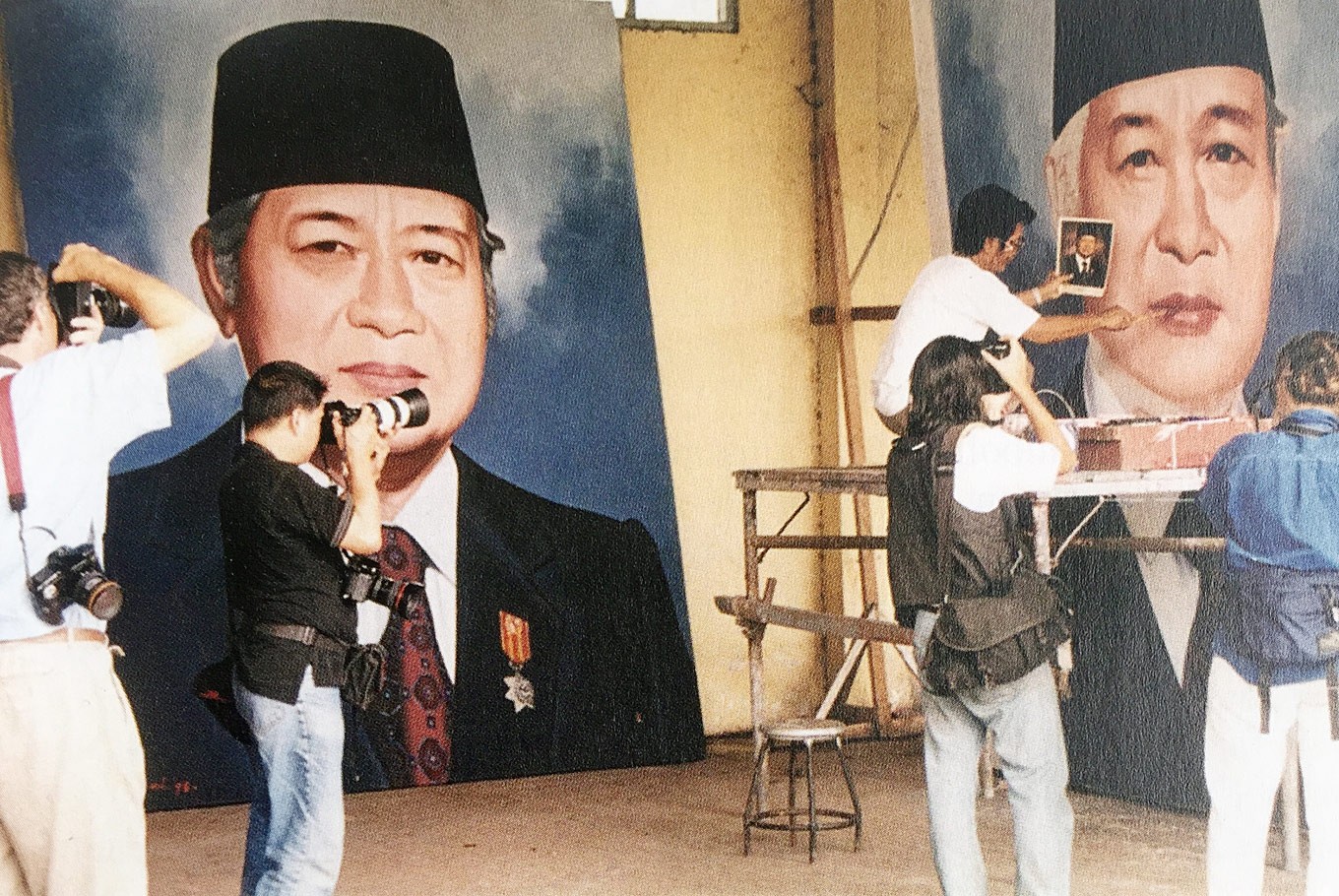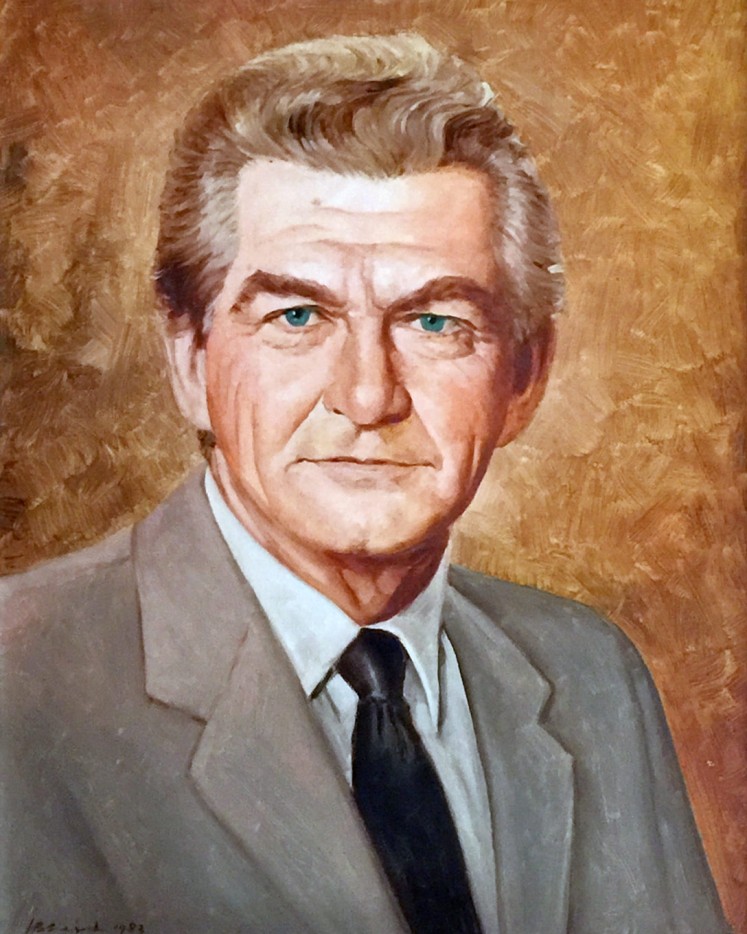Popular Reads
Top Results
Can't find what you're looking for?
View all search resultsPopular Reads
Top Results
Can't find what you're looking for?
View all search resultsIB Said forgotten painter of state guest portraits
Until about a decade ago, world leaders who visited Indonesia were always greeted with huge handmade portrait posters.
Change text size
Gift Premium Articles
to Anyone
W
ith the presidential election just around the corner, it is worth noting that until about a decade ago, world leaders who visited Indonesia were always greeted with huge handmade portrait posters that were displayed across Jakarta.
The painter of the posters was IB Said, an artist who specialized in creating portraits of official state guests.
Said, who was born in Malang, East Java, in 1934 and died in Blitar, East Java, in 2016, created over 220 paintings of world leaders from 1962 to 2008. His works include portraits of legendary Indian leader Jawaharal Nehru, Cambodian King Norodom Sihanouk, United Kingdom Queen Elizabeth II, former South African president and human rights icon Nelson Mandela, former German chancellor Helmut Kohl, Pope John Paul II and former United States presidents Ronald Reagan, George W. Bush and Bill Clinton.
Said’s posters – measuring four by three meters – often graced the Hotel Indonesia traffic circle, the Halim Perdana Kusuma Airport, the State Palace and Merdeka Palace. He was also required to paint two 90 by 75-cm images for the meeting hall, where state guests were officially welcomed at the Presidential Palace.
Based on official protocol, state guest portraits were placed side by side with those of the Indonesian president and first lady. So, Said was required to produce numerous paintings of Indonesian presidents from Sukarno to Susilo Bambang Yudhoyono, as each portrait was only to be used once.
“I painted Pak Harto (Suharto) and Ibu Tien (first lady) for 32 years,” Said, who painted the couple 500 times, once said.
When Suharto stepped down following the political and economic turmoil of 1998, Said’s achievements were highlighted by media outlets worldwide, such as Reuters, AFP, NHK in Japan, ABC Television in Australia and CBC in Canada.
Lee Kuan Yew, Prime Minister of Singapore, by IB Said, 1982. (JP/Agus Dermawan T.)The tradition of welcoming statespersons with large portraits has only been practiced in Indonesia and a handful of other countries, making Said’s work unique and rare.
Said was a very dedicated painter who worked hard for his country while leading a modest life, residing in a house he leased for decades in Haji Ung, Kemayoran, Jakarta.
He later moved to Depok, West Java, before finally settling in Slumbung village, Blitar, East Java, to live with his son.
Said later retired from his career as a state guest portrait artist because of his old age and because of developments in digital photo technology that allowed portrait posters to be created faster and easier.
Said had said the first part of his name, “IB”, derived from the word Ibe, the Madurese word for brother.
After studying painting at the Malang Fine Art School under the guidance of painter Widagdo, he furthered his studies in Yogyakarta under Trubus and Fadjar Sidik. He once lived in Bandung, West Java, to learn from painter Hendra Gunawan.
In the early 1960s, Said moved to Jakarta to join a state committee headed by Henk Ngantung and was tasked with enhancing the beauty of the capital.
During this time, he was assigned to paint portraits of President Sukarno on thick canvases, which were displayed in remote parts of West Irian (now Papua).
“For 50 days I was in West Irian, where half of the people were Indonesians and the other half were Dutchmen,” he said.
After the attempted coup d’état on September 30, 1965, Henk Ngantung’s committee was disbanded. Said was then appointed in 1967 by the State Secretariat to continue painting portraits of visiting statespersons.
Although he was proud of his job, he often found it difficult.
“Photo samples were often the size of a match box but I had to paint them very precisely,” he recalled.
Bob Hawke, Prime Minister of Australia, by IB Said, 1983. (JP/Agus Dermawan T.)After the New Order collapsed and the Reform Era began, he was summoned by the Presidential Palace to return to his main occupation.
Since 2000, numerous artists have called on the government to officially honor Said for his loyal services.
As the State Secretariat was his greatest patron, many art circles believe this institution should bestow the honor. However, the State Secretariat turned the obligation over to the Presidential Palace.
The authority for bestowing Said with his much deserved award was again transferred in 2014, this time to the Tourism and Creative Economy Ministry because officials believed his work was closely related to tourism promotion.
The ministry discussed the proposal at forums in Jakarta, Bandung, Yogyakarta and Bali, however developments stalled, with officials arguing the responsibility should lie with the Education and Culture Ministry.
This ministry pledged to consider the proposal. However, in 2015 its leadership changed with the transfer of power from president Yudhoyono to President Joko “Jokowi” Widodo. Said’s name has not been mentioned since.
During this year’s Independence Day celebrations on Aug. 17, the Indonesian government will once again award its regular Bintang Budaya Paradharma cultural medals of merit to figures who have given outstanding service to the nation and the state. Hopefully, one of those medals will finally be given to Said, who truly deserves the honor.













